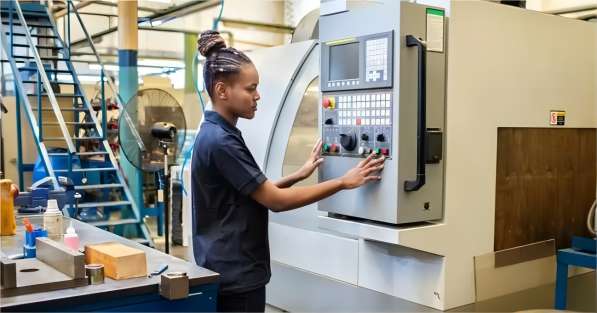In CNC machining, the accuracy and quality of machined parts are greatly influenced by various machining parameters. These include cutting speed, feed rate and depth of cut, each of which plays a vital role in the outcome of the machining process.
Cutting Speed: This parameter is the speed at which the cutting tool interacts with the workpiece. Insufficient cutting speed can lead to excessive heat generation, which can cause thermal damage to the tool and the workpiece. Conversely, the optimum cutting speed minimises the occurrence of thermal damage and improves surface finish.
Feed rate: The rate at which the workpiece feeds the cutting tool is another critical factor. If the feed rate is too high, tool breakage and poor surface finish may occur due to increased friction and heat. On the other hand, a feed rate that is too low may result in inefficient machining and increased machining time.
Depth of Cut: This parameter indicates the amount of material removed by the cutting tool in one pass. Cutting too deep puts too much stress on the tool and the machine, which can lead to tool breakage and leave a poor surface finish. Conversely, shallow cutting can lead to inefficient material removal and increased machining time.

Incorrect cutting parameters can lead to a variety of defects:
Dimensional inaccuracies: due to factors such as machine calibration errors, thermal expansion, or material inconsistencies, resulting in parts that do not meet the required specifications.
Warping and distortion: Usually associated with the release of internal stresses during machining or inadequate support, resulting in bent, twisted or deformed machined parts.
Chatter and vibration: caused by the interaction between the cutting tool and the workpiece, resulting in poor surface finish, tool breakage and reduced tool life.
Improper chip control: Ineffective chip removal can lead to chip recutting, tool damage and poor surface finish.
Heat-related defects: These include thermal expansion, material discolouration or heat-induced stresses leading to dimensional inconsistencies and material degradation.





